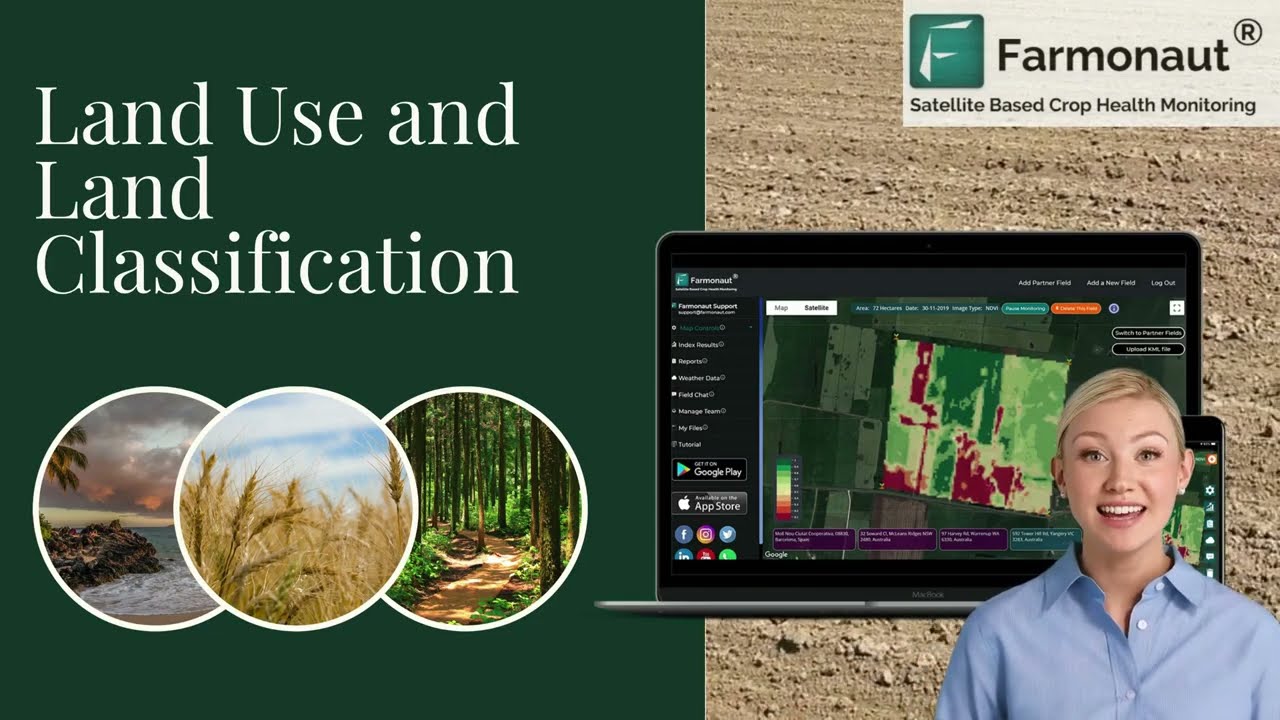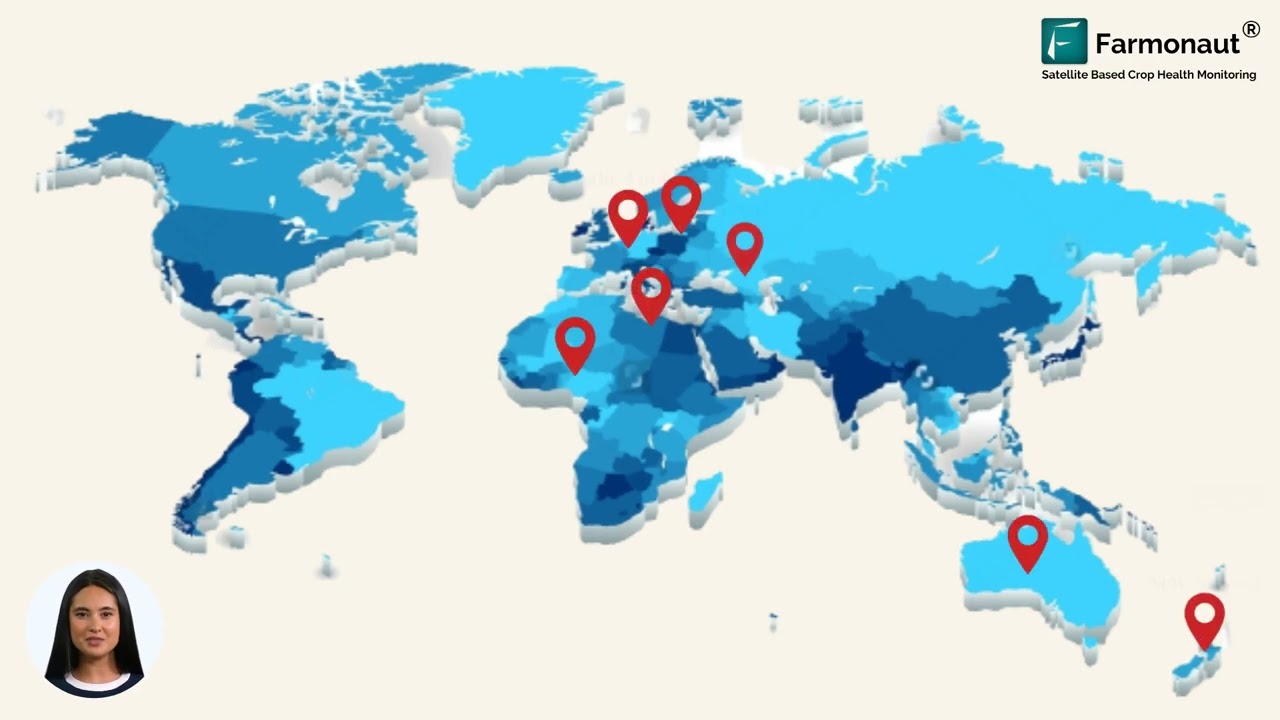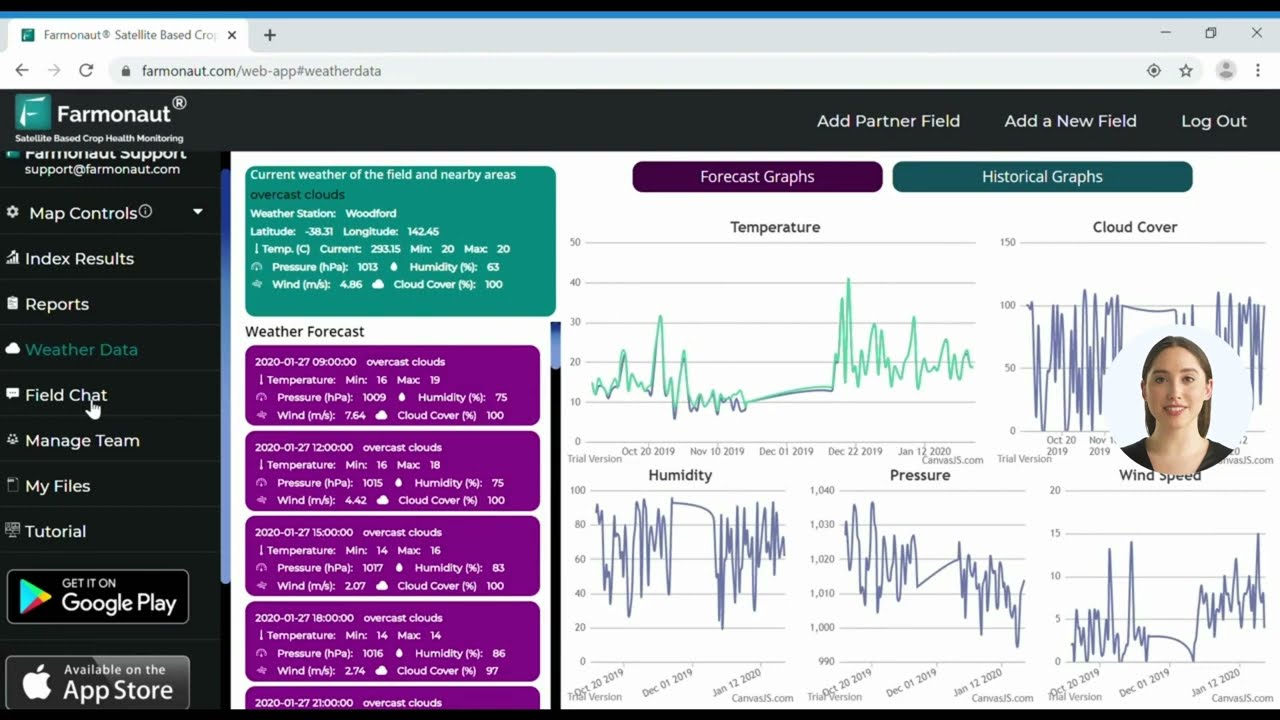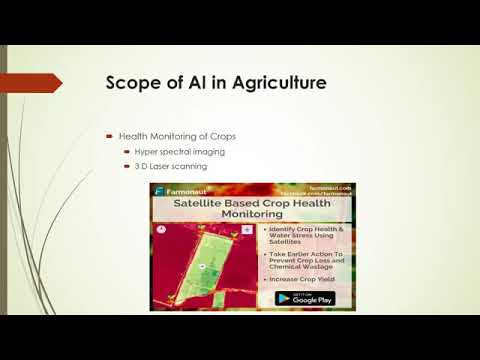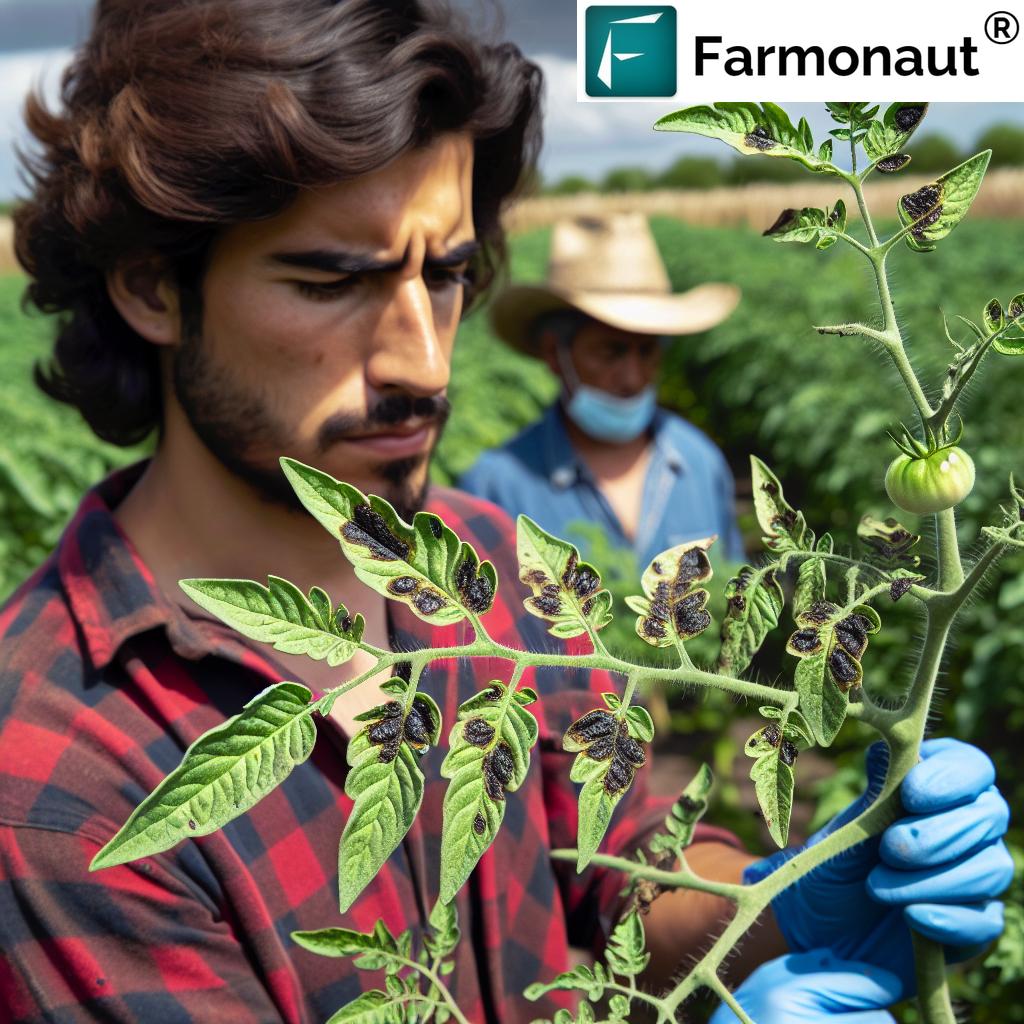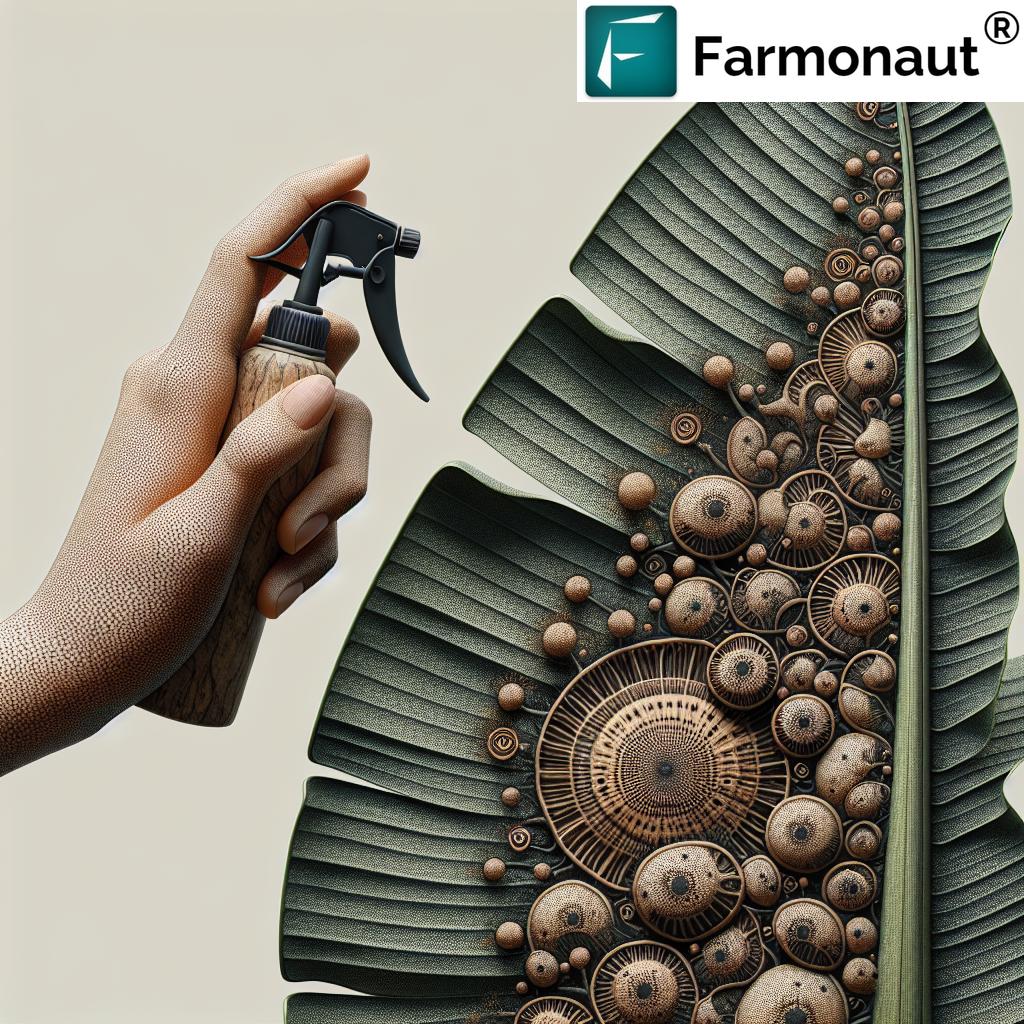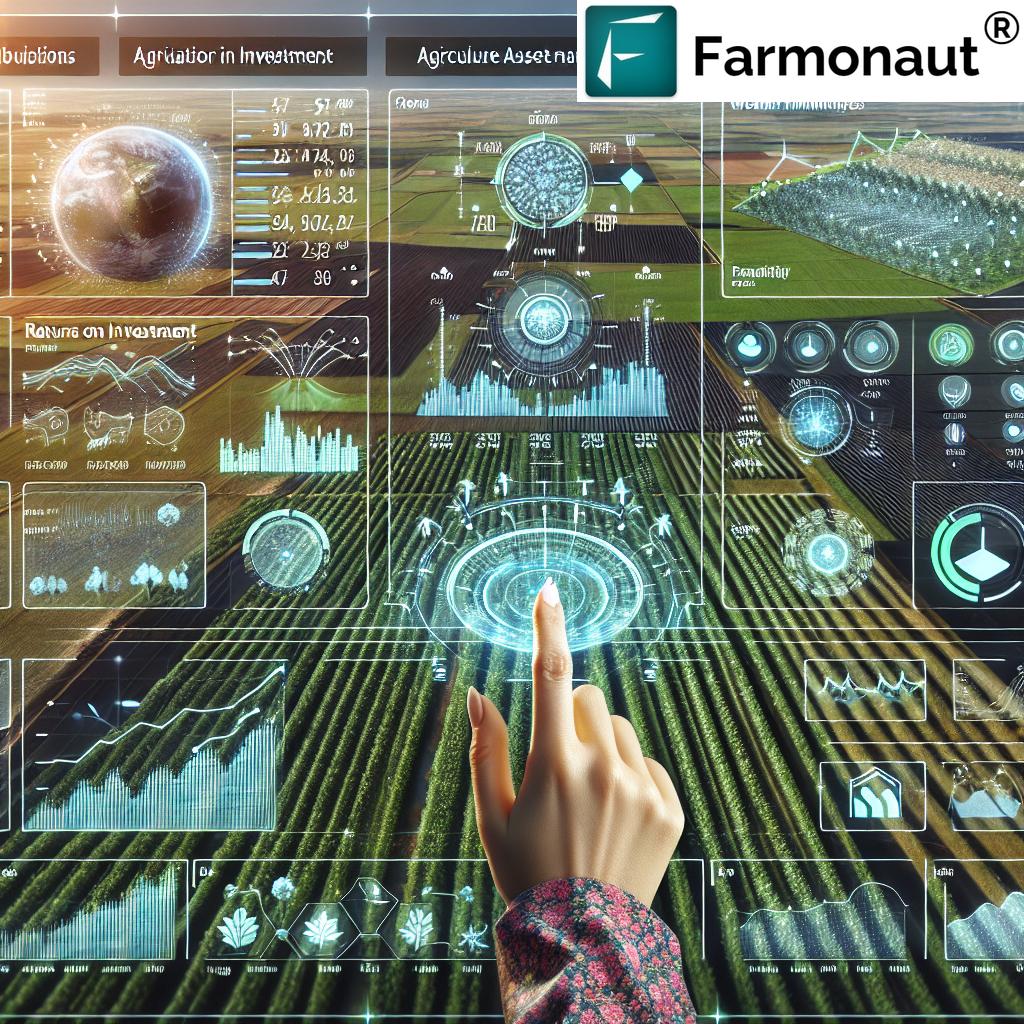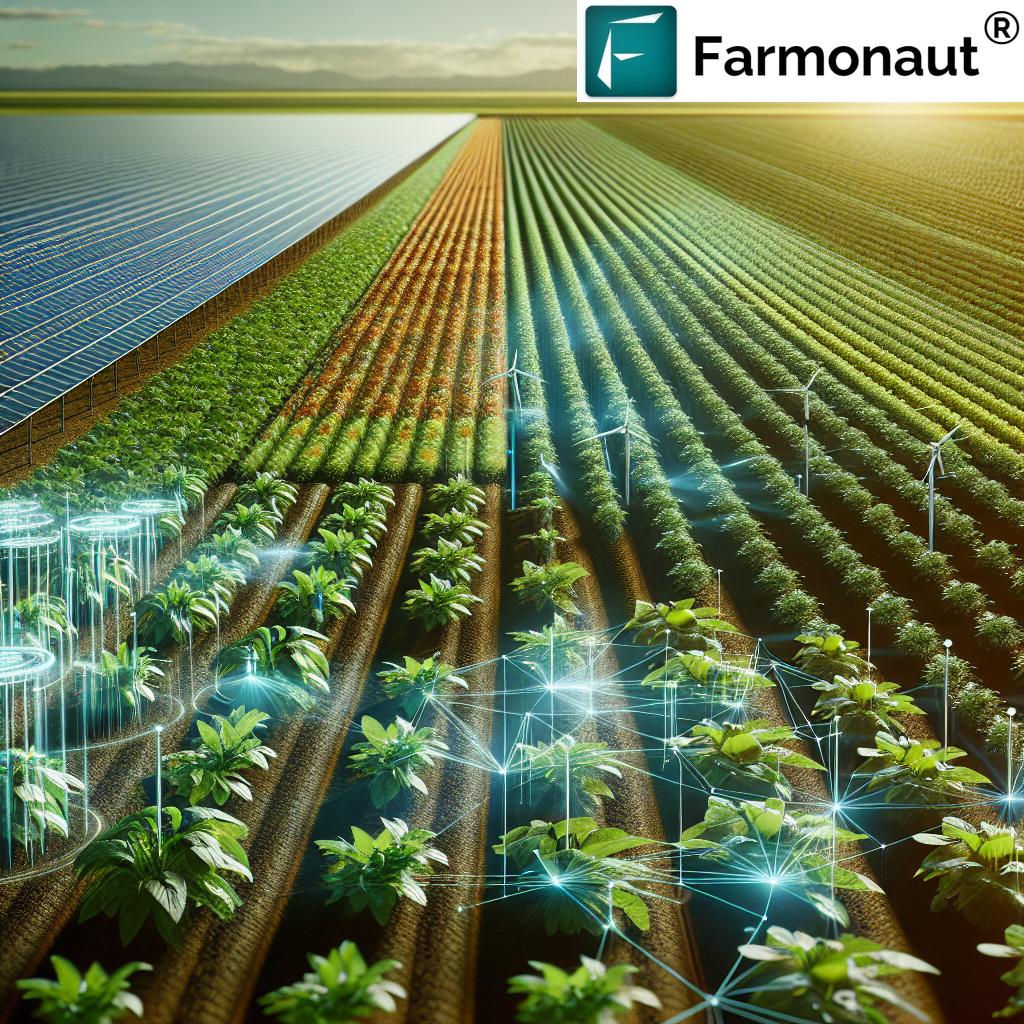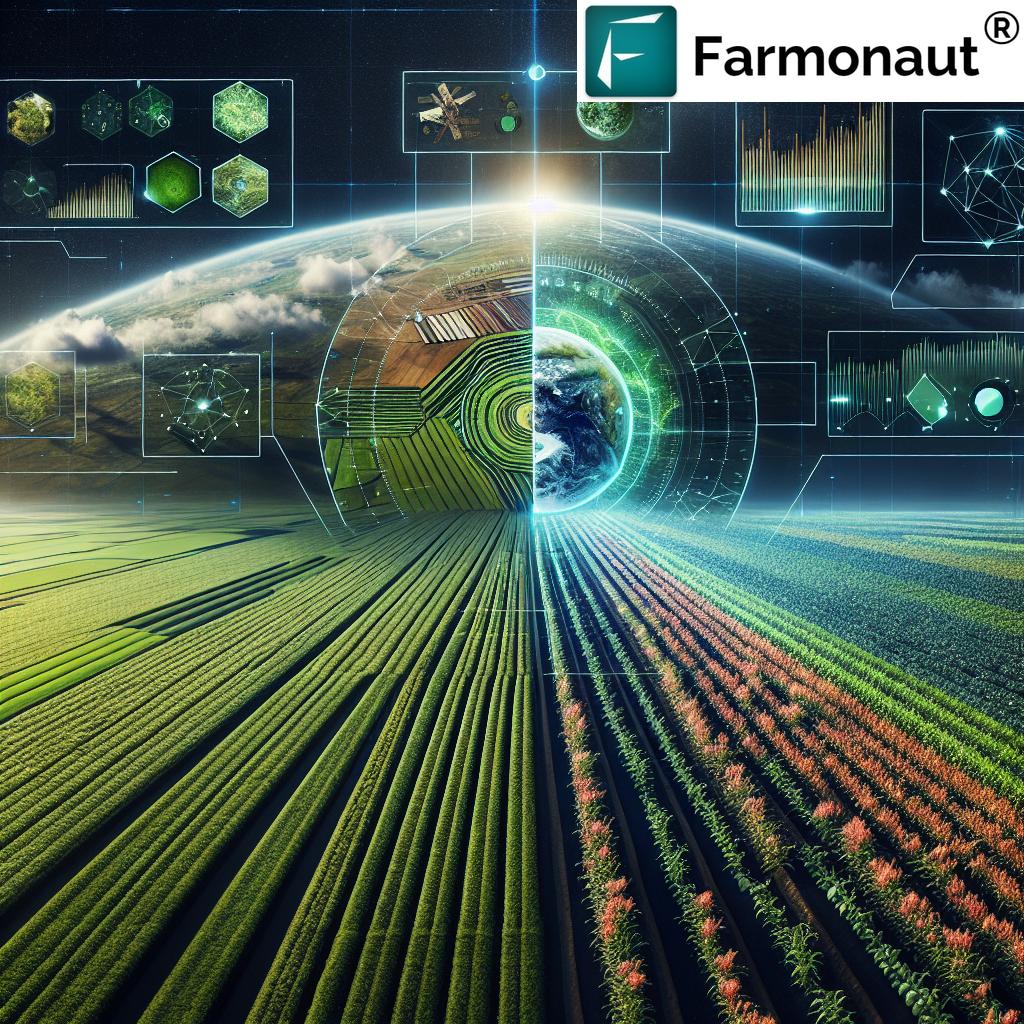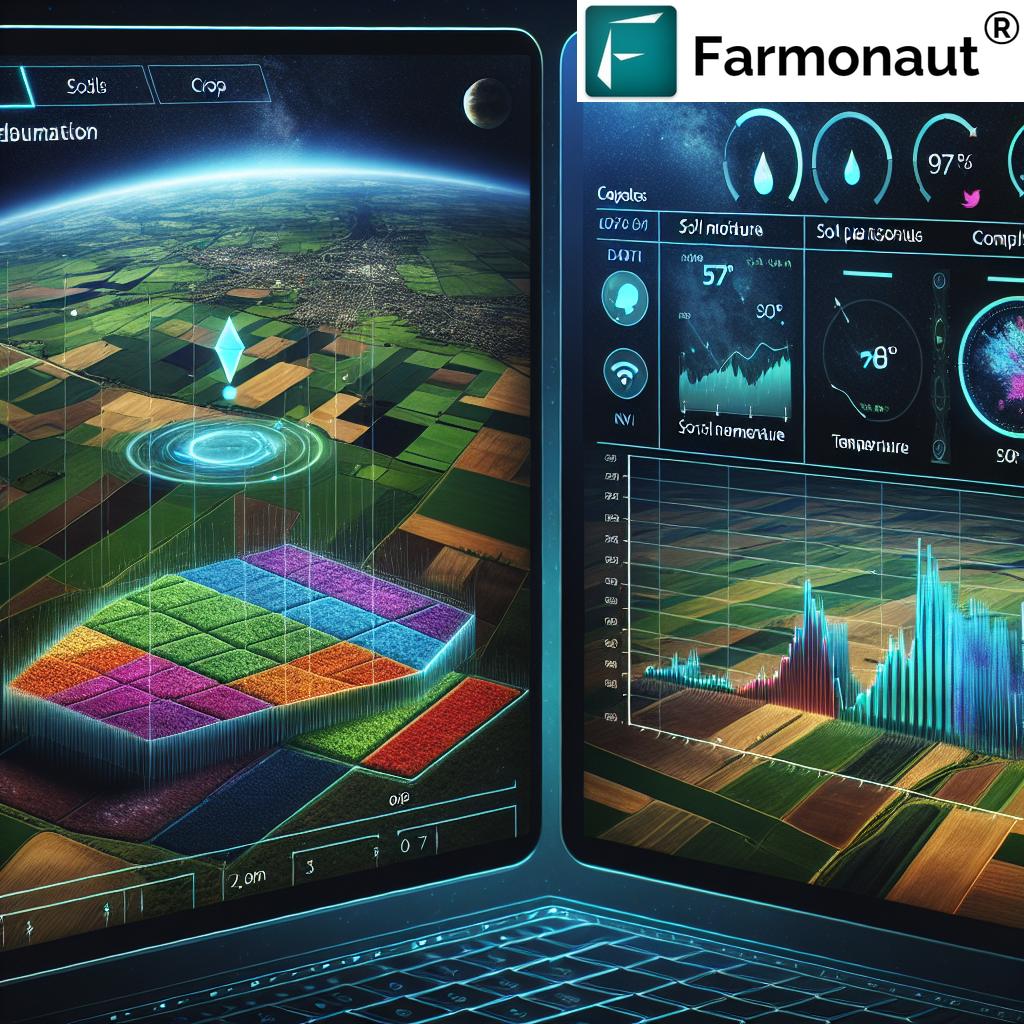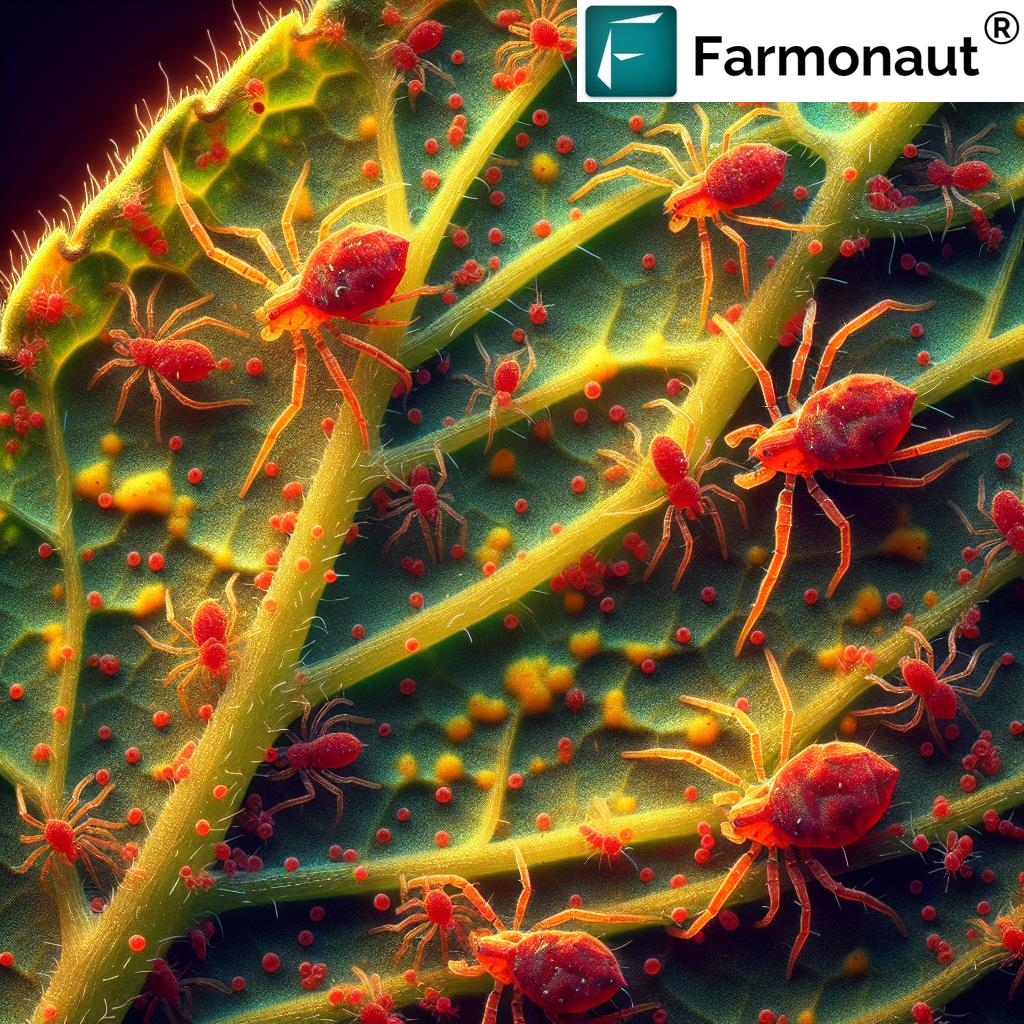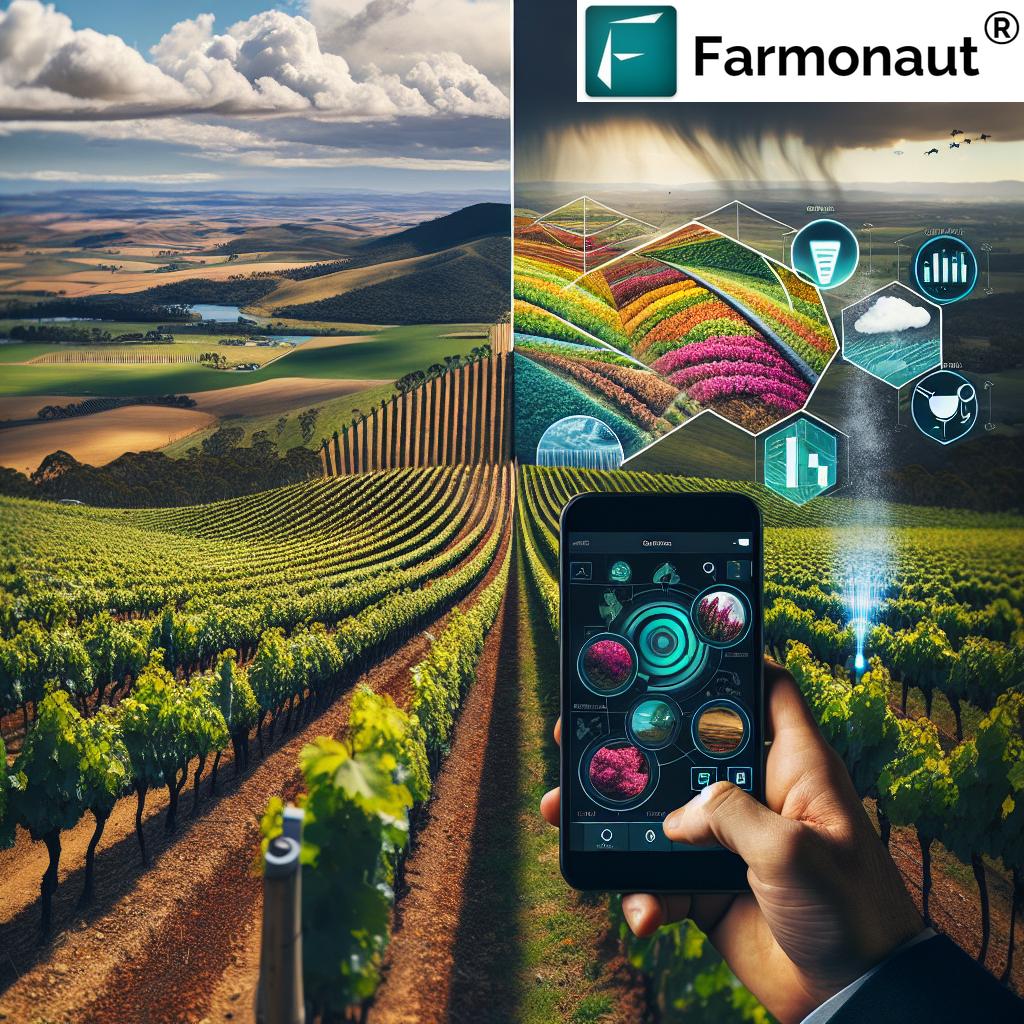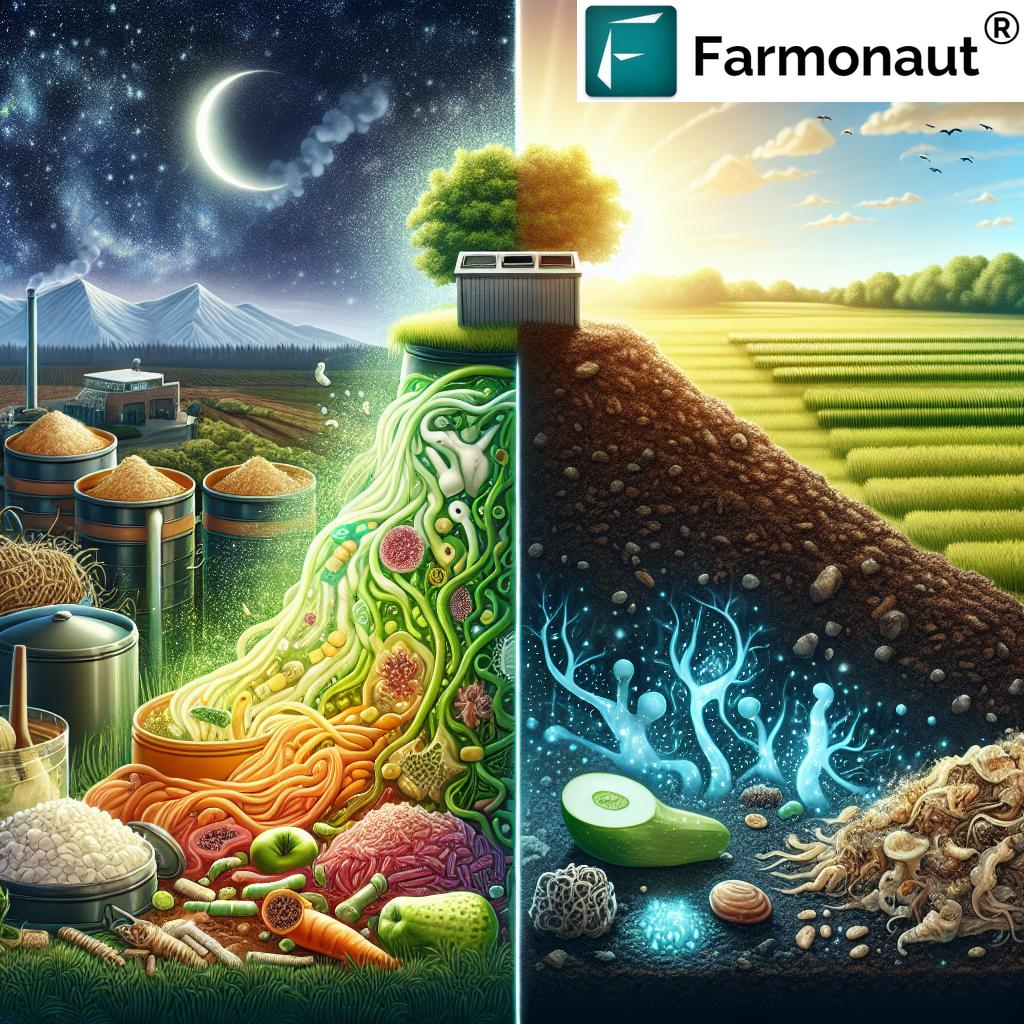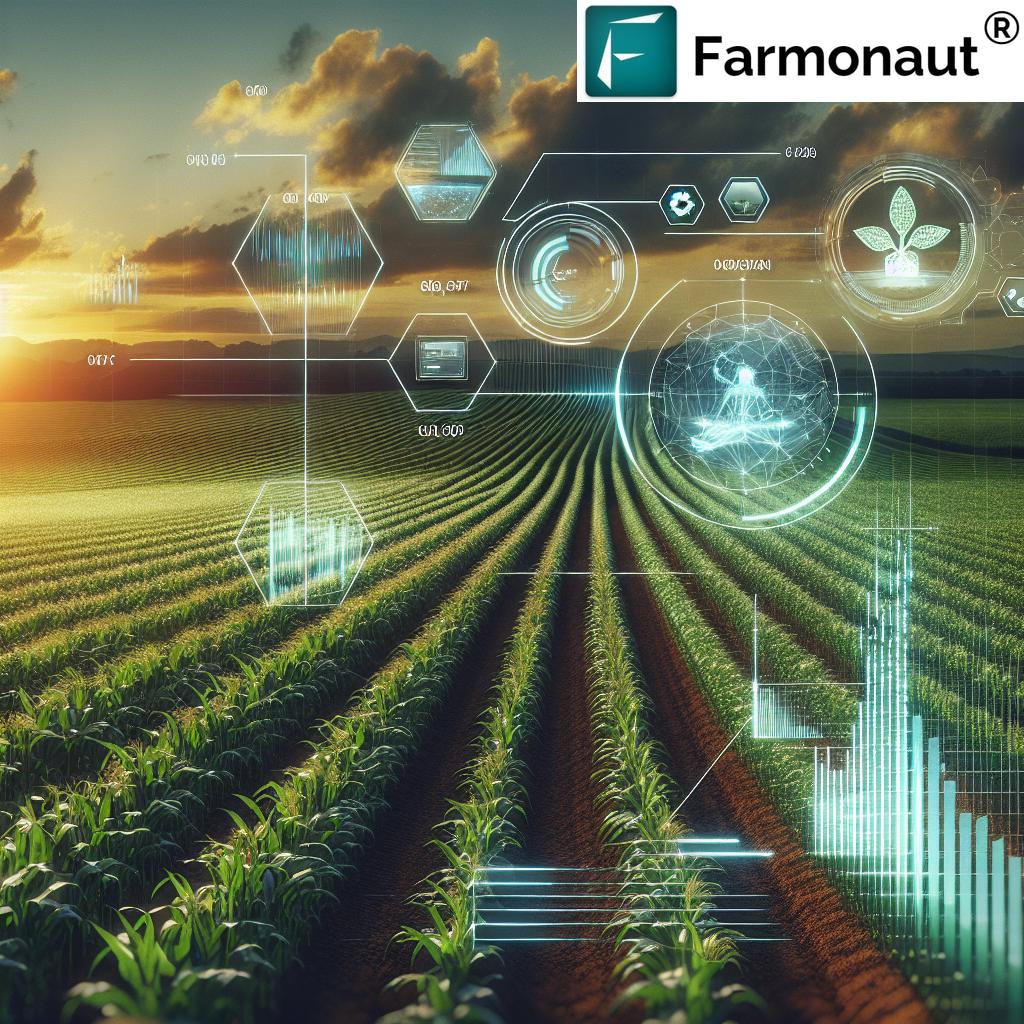7 Smart Agriculture Sensors That Skyrocket Crop Yields
“Smart agriculture sensors can increase crop yields by up to 30% through precise monitoring and resource optimization.”
Table of Contents
- Introduction: The Revolution of Smart Agriculture Sensors
- Why Smart Agriculture Sensors Matter
- 7 Types of Smart Agriculture Sensors Explained
- Comparison Table of Smart Agriculture Sensors
- Applications and Benefits in Farming and Forestry
- Challenges and Limitations in Adoption
- Farmonaut: Leading Satellite-based Smart Agriculture Solutions
- Support Tools: Apps, APIs, and Subscription Options
- The Future of Smart Agriculture Sensors
- FAQ – Smart Agriculture Sensors & Precision Farming
- Conclusion
Introduction: The Revolution of Smart Agriculture Sensors
In recent years, the integration of smart agriculture sensors and IoT in agriculture has transformed how we approach farming and forestry. As precision farming technology continues to evolve, it empowers us to collect real-time data on soil, crops, and environmental conditions—enabling us as farmers, foresters, and agribusinesses to make more informed, data-driven decisions. These advances not only optimize crop productivity and resource management but also drive sustainable agriculture practices that benefit both producers and the planet.
In this blog, we’ll take a comprehensive journey through the seven most impactful smart sensors revolutionizing the agricultural landscape. We’ll cover their working principles, applications, advantages, and implementation challenges, as well as how Farmonaut’s satellite-based solutions seamlessly integrate with these technologies for holistic farm management.
Why Smart Agriculture Sensors Matter
Modern agriculture is increasingly data-driven. As environmental pressures intensify and populations grow, we must optimize resource use, reduce waste, and enhance land productivity—all while ensuring sustainability. Incorporating smart agriculture sensors is one of the most effective ways to meet these challenges.
Here’s why:
- Precision in Resource Management: Sensors help us measure and deliver water, nutrients, and protection exactly when and where crops need them.
- Real-time Crop Monitoring: Continuous monitoring helps us catch issues—like pest infestations or disease—long before they escalate to major problems.
- Improved Environmental Stewardship: With sensor-driven data, we can manage our land and resources more sustainably, protecting soil, conserving water, and reducing the environmental footprint of agriculture.
- Actionable Insights: Data from these sensors feeds advanced agricultural data analysis systems, enabling smarter, faster, and more accurate decision-making.
In short, smart sensors are no longer a luxury. They are a necessity for modern, productive, and resilient farming and forestry operations.
“Over 70% of precision farming operations now use soil moisture sensors for efficient irrigation management.”
7 Types of Smart Agriculture Sensors Explained
Let’s dive into the seven most impactful types of smart agriculture sensors boosting yields and sustainability in modern farming and forestry:
-
Soil Moisture Sensors
Primary Use: Measuring soil water content in real time to support efficient and sensor-based irrigation management.
By installing soil moisture sensors at different depths in the root zone, we can precisely measure when and how much to irrigate—preventing both overwatering and drought stress. These sensors are fundamental for soil moisture monitoring and optimizing crop health.
Benefits:- Significantly conserve water resources.
- Reduce irrigation costs and energy usage.
- Enhance root and plant health, leading to higher yields.
Ideal for: Field crops, vineyards, orchards, and greenhouses.
-
Temperature and Humidity Sensors
Primary Use: Monitoring ambient temperature and humidity, essential for managing microclimates and predicting weather-driven pest and disease risks.
These environmental sensors for farming are vital for crop management—helping us assess and react to conditions within greenhouses, storage facilities, and even in open fields, safeguarding optimal crop development.
Benefits:- Better control of microclimates.
- Early detection of stress due to environmental extremes.
- Enables more precise crop scheduling and harvest planning.
Ideal for: Greenhouses, nurseries, postharvest storage, sensitive field crops.
-
Nutrient Sensors
Primary Use: Detecting nutrient concentrations (N, P, K, etc.) in soil or hydroponic systems for precision fertilization.
These sensors allow us to regularly monitor nutrient availability, correct deficiencies, and avoid unnecessary fertilizer application. This precise management improves environmental safety and crop quality.
Benefits:- Optimized fertilizer use—reduced waste, lower costs.
- Improved plant health and nutrient efficiency.
- Minimized nutrient runoff and pollution.
Ideal for: High-value cash crops, greenhouse, and hydroponic operations.
-
Optical Sensors
Primary Use: Utilizing light reflectance and remote sensing (e.g., NDVI) to assess vegetation health, detect stress, and monitor growth phases.
Optical sensors are at the heart of large-scale farm management and real-time crop monitoring. They capture data on leaf color, photosynthetic activity, and other plant health indicators remotely.
Benefits:- Early detection of stress, disease, or nutrient deficiencies.
- Objective, large-area coverage—including remote and inaccessible lands.
- Input to yield prediction and precision input application.
Ideal for: Extensive row crops, forestry, precision farming technology, pasture monitoring.
-
Biosensors
Primary Use: Detecting biological molecules, pathogens, and pest infestations.
These highly specialized sensors serve as early warning systems for disease and pest outbreaks—using molecular markers, antibodies, or DNA probes to identify threats before symptoms are visible.
Benefits:- Targeted, rapid diagnosis to allow for timely interventions.
- Reduced need for broad-spectrum pesticides—improving sustainability.
- Minimizing crop and yield losses from delayed detection.
Ideal for: Vineyard, vegetable, fruit, and high-value specialty crops, forestry pest control.
-
Electrochemical Sensors
Primary Use: Monitoring soil and water chemistry—measuring pH, salinity, nitrate concentrations, and pollutant levels.
These sensors give us a detailed chemical profile of our growing environment—crucial for optimal crop growth, pollution detection, and sustainable land management.
Benefits:- Improved environmental quality by tracking and managing pollutants.
- Precision fertilization with real-time feedback for optimal plant uptake.
- Avoidance of saline/acidic soil-induced yield reduction.
Ideal for: Paddy fields, horticulture, land reclamation, forestry, and water management operations.
-
Livestock Health Sensors & Wearable Devices
Primary Use: Wearable IoT devices track vital signs, location, and activity of livestock.
This class of sensors provides livestock health monitoring, enhances productivity, and reduces the risk of disease outbreaks through continuous tracking.
Benefits:- Real-time health and reproductive monitoring—early detection of illness.
- Improved farm labor efficiency and high animal welfare standards.
- Secure tracking of grazing livestock and loss prevention.
Ideal for: Dairy, beef cattle, sheep, and pasture-based livestock operations.
Comparison Table of Smart Agriculture Sensors
| Sensor Type | Primary Function | Estimated Yield Improvement (%) | Key Benefit | Ideal Use Case / Crop | Example Deployment |
|---|---|---|---|---|---|
| Soil Moisture Sensors | Measure soil water content for precise irrigation | ~15% | Water savings & yield increase | Field crops, orchards, greenhouses | Sensor-based irrigation management in wheat/rice farms |
| Temperature & Humidity Sensors | Monitor ambient climate for growth & risk | ~5-10% | Better climate control & crop protection | Greenhouses, fruit crops, vegetables | Greenhouse microclimate management |
| Nutrient Sensors | Detect essential soil nutrients (N, P, K) | ~8% | Efficient fertilization and plant health | Hydroponics, specialty/horticultural crops | Precision fertilization in lettuce/tomato |
| Optical (NDVI) Sensors | Assess crop vigor using light reflectance | ~10-12% | Early detection of stress, broad coverage | Row crops, plantations, forestry | Satellite imagery for canola or maize monitoring |
| Biosensors | Identify diseases or pathogens in plants/soil | ~7% | Timely detection, targeted control | Greenhouse, grapevines, specialty crops | Fungal disease detection in grapes |
| Electrochemical Sensors | Monitor pH, salinity, and nutrient ions | ~6% | Improved soil & water chemistry | Paddy, horticulture, reclamation projects | Soil salinity mapping for rice crops |
| Livestock Wearable Sensors | Track animal health, location & activity | ~5% | Better animal health & management | Dairy & beef cattle, sheep | Wearable health monitoring in dairy cows |
Applications and Benefits of Smart Agriculture Sensors in Farming and Forestry
The integration of these sensor types into agricultural and forestry operations has revolutionized precision farming, supporting resource efficiency, higher productivity, and sustainable agriculture practices. Let’s look at some vital applications and their impact:
Sensor-Based Irrigation Management
- Using soil moisture sensors, we can schedule irrigation based on the actual needs of crops—eliminating waste and conserving water resources.
- This technology is particularly effective in regions facing water scarcity or erratic rainfall.
Real-time Crop Monitoring and Early Detection
- Optical sensors and biosensors allow us to detect stress, disease, and pest infestations before they threaten yields.
- Timely responses—be it targeted pesticide application or nutrient correction—prevent crop losses and ensure quality.
Nutrient and Fertilizer Management
- Nutrient sensors and electrochemical sensors offer continuous data on soil and water chemistry.
- This supports precise fertilization, reducing costs and environmental impact, and promoting sustainable agriculture practices.
Climate and Environmental Monitoring
- Temperature and humidity sensors help us manage microclimates within greenhouses and in open-field agriculture, optimize growing conditions, and mitigate losses due to sudden climate changes.
- Environmental sensors track soil, water, and air quality—informing pollution prevention and sustainable land practices.
Livestock Health Monitoring
- Wearable IoT devices monitor livestock health, activity, and locations—streamlining day-to-day operations and reducing risks of disease and loss.
Environmental, Economic, and Social Benefits
- Resource Efficiency: Less water, pesticide, and fertilizer use—lowering costs and environmental footprint.
- Increased Productivity: Real-time, sensor-driven decisions boost yields and produce quality.
- Sustainability: Improved land, water, and biodiversity management supports long-term agricultural resilience.
- Transparent & Traceable Operations: By integrating with digital management platforms, all input and output data can be tracked for compliance and supply chain transparency. Discover more about traceability.
Challenges & Limitations in Implementing Smart Agriculture Sensors
Despite their undeniable benefits, widespread adoption of smart agriculture sensors faces several obstacles:
- High Initial Investment: The setup for precision sensor systems can be expensive, especially for smallholder operations.
- Data Management Complexity: Efficient agricultural data analysis requires modern infrastructure to handle vast, continuous data streams.
- Connectivity Gaps: Many rural and remote areas lack stable internet or networks for real-time data transfer, limiting the effectiveness of IoT in agriculture.
- Integration Complexity: Ensuring compatibility between various sensor types and existing farm equipment can be tricky.
- Data Security & Privacy: Protecting sensitive farm and crop data is critical as digitalization deepens.
However, as the technology matures, these limitations are being systematically addressed through lower-cost devices, cloud-based analysis, and improved network infrastructure.
Farmonaut: Leading Satellite-based Smart Agriculture Solutions
When we talk about harnessing the power of smart agriculture sensors, Farmonaut stands out as a transformative agri-tech innovator. Here’s how Farmonaut enables affordable, scalable, and actionable solutions for modern agriculture and forestry:
- Advanced Satellite-Based Crop Monitoring: Farmonaut’s platform collects multispectral satellite images to deliver real-time data on crop health, NDVI, and soil moisture. This empowers us to monitor thousands of hectares with zero physical sensor installation—ideal for expansive fields, forestry, and large-scale agro-operations.
- AI & ML Data Analysis: Using the Jeevn AI Advisory System, Farmonaut translates satellite- and sensor-based data into simple, actionable insights and advisories—improving farm efficiency and optimizing input use.
- Blockchain-Based Traceability: For supply chain transparency and compliance, Farmonaut offers blockchain-based traceability —assuring end-to-end product authenticity and ethical sourcing.
- Fleet and Resource Management: Centralized tools for vehicle, machinery, and logistics fleet management, enhancing equipment productivity and reducing operational bottlenecks.
- Carbon Footprinting: With carbon footprint tracking tools, we can quantify, monitor, and reduce our environmental impact—critical for meeting today’s regulatory and market demands for sustainability.
- Seamless Land and Plantation Monitoring: Farmonaut supports large-scale farm management and crop, plantation, and forest advisory solutions—supporting both farmers and forestry operations at scale.
Unlike traditional precision farming tools requiring expensive hardware, Farmonaut’s satellite-first approach ensures affordability (no per-field sensor outlay) and scalability—making smart agriculture accessible to all, from smallholders to agribusiness giants and government agencies.
Support Tools: Access Farmonaut’s Apps, APIs & Subscription Options
To make next-generation precision farming easy, Farmonaut provides:
- Multi-Platform Access: Our platform is available through:
-
API for Developers & Businesses: Integrate satellite imagery, weather, and smart sensor data seamlessly into your own platforms.
→ Farmonaut’s public API |
API Developer Docs - Flexible Subscriptions: Tailored for farmers, agribusinesses, NGOs, and governments, our pricing is scalable—pay only for the area, crop type, and update frequency you require.
The Future of Smart Agriculture Sensors
Looking ahead, the potential for smart agriculture sensors is only growing. Technology is evolving rapidly, with promising developments such as:
- Lower Costs: As sensor manufacturing advances and adoption expands, costs will drop—making precision farming accessible for all.
- Next-Gen Analytics: Enhanced by artificial intelligence and machine learning, new systems will analyze sensor data even more precisely, driving targeted actions for better yields and sustainability.
- Universal Connectivity: The expansion of 5G and LPWAN networks will support real-time data exchange in even the most remote farms and forest lands.
- Standardization: With developing industry standards, integration between diverse sensors, apps, and equipment will become seamless for farms of all scales.
- Advanced Traceability and Compliance: Demand for carbon footprinting and regulatory reporting makes robust digital monitoring more crucial than ever.
FAQ – Smart Agriculture Sensors & Precision Farming
Q1: What are the main advantages of using smart agriculture sensors?
Smart agriculture sensors offer accurate, real-time monitoring of soil, crop, and environmental conditions, allowing for precise irrigation, fertilization, and pest/disease control. This results in significantly higher yields, reduced input costs, efficient water and resource use, and improved sustainability.
Q2: How does Farmonaut differ from traditional sensor-based solutions?
Farmonaut leverages satellite imagery, AI, and data analytics to provide wide-area crop, soil, and land monitoring without the need for expensive per-field sensors. This approach makes scalable precision farming affordable and accessible to all farmers and agribusinesses.
Q3: Which crops benefit most from smart sensor technology?
Row crops (like maize, corn, soybeans), fruit and vegetable crops, and high-value specialty/horticultural crops benefit greatly. Forestry management and pasture/livestock operations also see dramatic gains through optimized resource and environmental management.
Q4: What is real-time crop monitoring, and why is it important?
Real-time crop monitoring involves using connected sensors and satellite data to continuously track crop health, growth, and risks (like water stress or disease). It enables timely interventions—leading to higher productivity, reduced losses, and better quality yields.
Q5: Are smart agriculture sensors relevant for small-scale or only large-scale farmers?
Smart agriculture sensors—especially when paired with satellite and AI-driven platforms like Farmonaut—are now accessible to both smallholders and large-scale agribusinesses. Subscriptions can be tailored for any farm size, making data-driven agriculture universal.
Q6: How do smart sensors contribute to sustainable agriculture?
They optimize the use of water, nutrients, and land, minimize runoff and environmental impact, and support traceable, transparent food supply chains—paving the way for long-term sustainability.
Q7: Can I use Farmonaut with my existing sensor equipment?
Farmonaut’s satellite-driven platform complements and enhances ground-based sensor data, providing a holistic approach to land and crop management that is compatible with most major farming systems and equipment.
Conclusion: The Smarter Future of Farming and Forestry
Smart agriculture sensors are fundamentally transforming how we manage agriculture and forestry—bringing a new era of data-driven, sustainable, and highly productive operations. Whether it’s soil moisture monitoring for irrigation control, optical sensors for disease detection, or AI-powered satellite imagery for comprehensive land management, the integration of these sensors enables us to optimize every aspect of farm and forest management.
Platforms like Farmonaut combine affordable technology and powerful analytics with accessibility—bridging the digital divide for farmers and foresters worldwide. As we move forward, smarter, greener, and more sustainable practices empowered by smart sensor networks will become the norm, supporting secure food systems and resilient lands for generations to come.
Ready to take precision agriculture to the next level? Get started with Farmonaut’s platform—or explore our API for advanced integrations. Check out our large-scale monitoring capabilities and crop loan & insurance tools for additional value and security. Let’s farm smarter, together!


